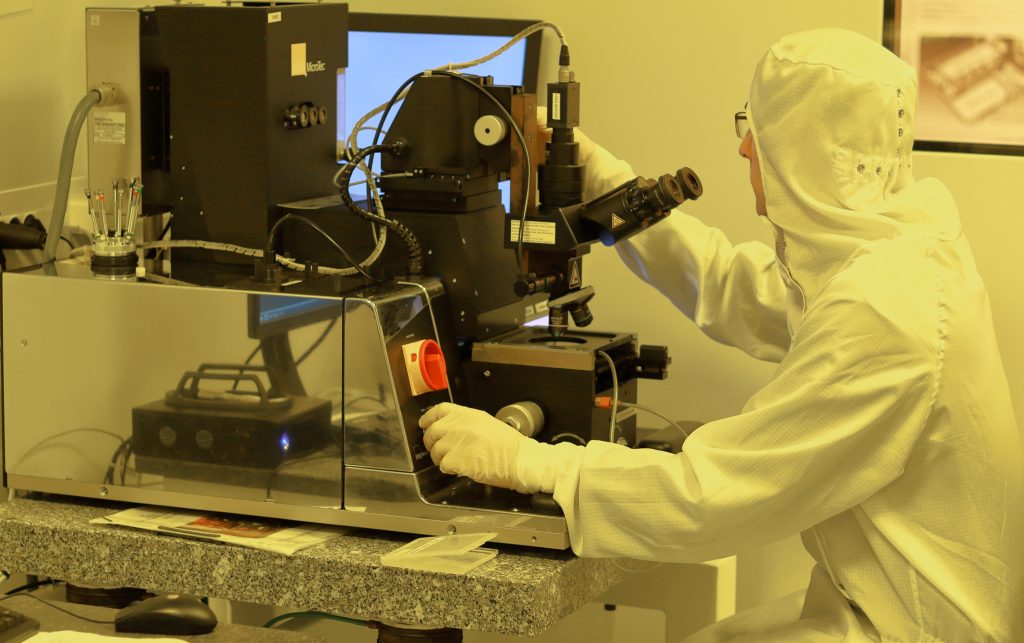Nanotechnology

WHAT IS NANOTECHNOLOGY?
Nanotechnology, also shortened to nanotech, is the use of matter on an atomic, molecular, and supramolecular scale. This innovative branch controls the sub-atomic design of materials to change their inborn properties and acquire others with advanced applications. This is the situation of graphene – changed carbon harder than steel, lighter than aluminium, and practically transparent — or nanoparticles utilized in regions like hardware, energy, biomedicine, or defence.
In 1959 the American Nobel prize and physicist Richard Feynman was the first to talk about the utilization of nanotechnology at the California Institute of Technology (Caltech). With the 21st century, this region solidified was promoted and made its mark. It incorporates different areas like micro-manufacturing, organic chemistry, and molecular biology. For instance, in the United States alone, more than 18 billion dollars were contributed somewhere in the range of 2001 and 2013 through the NNI (National Nanotechnology Initiative) to move this area toward a driver of financial development and intensity.
Nanotechnology and its infinitesimal universe offer massive opportunities for contemporary science and industry. This field, which thrived between the 60s and 80s, has flooded over the most recent twenty years with a roaring worldwide market whose worth will surpass 125,000 million dollars in the following five years, as indicated by the Global Nanotechnology Market (by Component and Applications) report by Research and Markets which presents estimates for 2024.
Invisible particles that battle cancer cells, faster microprocessors that devour less energy, batteries that last multiple times longer, or solar panels that yield twice as much energy. These are only a portion of the numerous uses of nanotechnology, a control with every one of the fixings to transform into the next industrial revolution.
TYPES OF NANOTECHNOLOGY
The various sorts of nanotechnology are characterized by how they proceed (top-down or bottom-up) and the medium where they work (dry or wet):
Descending (top-down)
Systems and constructions are scaled-down at the nanometric scale — from one to 100 nanometres in size. It is the most regular to date, particularly in electronics.
Ascending (bottom-up)
You start with a nanometric structure — an atom, for instance — and through a mounting or self-get together cycle, you make a more enormous mechanism than the one you began with.
Dry nanotechnology
It is utilized to make structures in coal, silicon, inorganic materials, metals, and semiconductors that don’t work with moistness.
Wet nanotechnology
It depends on organic frameworks present in a fluid climate — including hereditary material, layers, catalysts, and other cell segments.
HOW DOES NANOTECHNOLOGY WORK?
Nanotechnology is the arrangement and control of issues at the nanometer scale, where remarkable wonders empower novel applications. Nanotechnology includes imaging, estimating, demonstrating, and controlling matter at this length scale, incorporating nanoscale science, engineering, and innovation.
Nanotechnology includes the plan, portrayal, creation, and use of nanoscale constructions, gadgets, and frameworks that produce designs, devices, and frameworks with at any rate one novel/general trademark or property.
At the core of nanotechnology is the way that the properties of materials can be distinctive at the nanoscale for two principal reasons:
To begin with, nanomaterials have a moderately more significant surface region when contrasted with a similar mass of material delivered in a more prominent structure. This can make materials all the more artificially receptive (sometimes materials inactive in their more numerous form are responsive when shown in their nanoscale structure) and influence their solidarity or electrical properties.
Second, alleged quantum effects can start to rule the nanoscale conduct at the nanoscale – especially at the lower end – influencing materials’ optical, electrical, and magnetic behavior.

APPLICATIONS OF NANOTECHNOLOGY
Nanotechnology and nanomaterials can be applied in a wide range of mechanical areas. Nanotechnology usually is found in these areas:
Gadgets
Carbon nanotubes are near swapping silicon as a material for making more modest, quicker, and more effective computer chips and gadgets, just as lighter, more conductive, and more grounded quantum nanowires. Graphene’s properties make it an ideal possibility for the improvement of adaptable touchscreens.
Energy
Another semiconductor created by Kyoto University makes it conceivable to produce sun-powered boards that twofold the measure of daylight changed over into power. Nanotechnology additionally brings down costs, has more grounded and lighter breeze turbines, improves eco-friendliness, and, gratitude to the warm protection of some nano segments, can save energy.
Biomedicine
The properties of some nanomaterials make them ideal for improving early analysis and therapy of neurodegenerative illnesses or diseases. They can assault disease cells precisely without hurting other healthy cells. Some nanoparticles have additionally been utilized to improve drug items like sunscreen.
Climate
Air refinement with particles, wastewater filtration with nanobubbles, or nanofiltration frameworks for substantial metals is harmless to the ecosystem applications. Nanocatalysts are likewise accessible to make compound responses more proficient and less polluting.
Food
In this field, nanobiosensors could distinguish the presence of microorganisms in food or nanocomposites to improve food creation by expanding mechanical and warm obstruction and diminishing oxygen move in packaged items.
Textile
Nanotechnology makes it conceivable to foster savvy textures that don’t stain nor wrinkle, just as more grounded, lighter, and more solid materials to make protective cruiser caps or athletic gear.
ADVANTAGES & DISADVANTAGES OF NANOTECHNOLOGY
ADVANTAGES
- Advancing sustainable power sources: It empowers better approaches to acquire and store energy. It likewise makes solar panels less expensive and more productive.
- It broadens the hardware restrictions: Unlike silicon microchips, nanochips will make it conceivable to fabricate exact circuits at a nuclear level.
- It permits a more effective medication: Arteries can be unblocked, cells can be specifically assaulted, harmed qualities can be fixed, and quicker and more exact medical procedures can be performed.
DISADVANTAGES
- It compromises the climate: This kind of innovation could cause adverse consequences on the environment by producing new poisons and contaminations.
- It affects the work market: Obsolete materials and changes underway cycles could obliterate positions. However, this innovation could make others.
- It bargains security: The properties of this innovation could work with secret activities, the creation of nano weapons, and keen projectiles.
THE FUTURE OF NANOTECHNOLOGY
There are bright and dim spots later on for nanotechnology. From one perspective, the area is required to develop internationally, determined by innovative advances, expanded government support, extended private speculation, and generating interest for more modest gadgets, to give some examples. Nonetheless, the ecological, health, and dangers of nanotechnology and concerns identified with its commercialization could hamper market extension.






